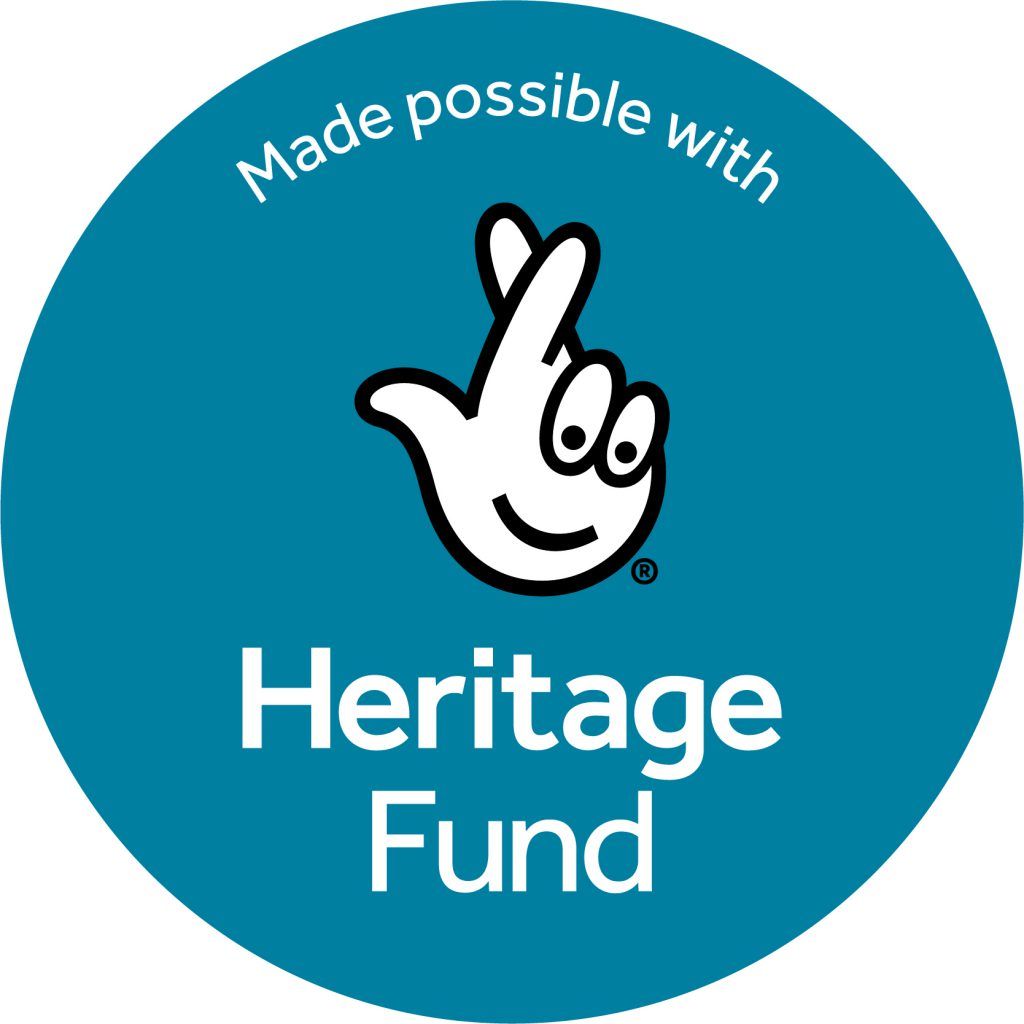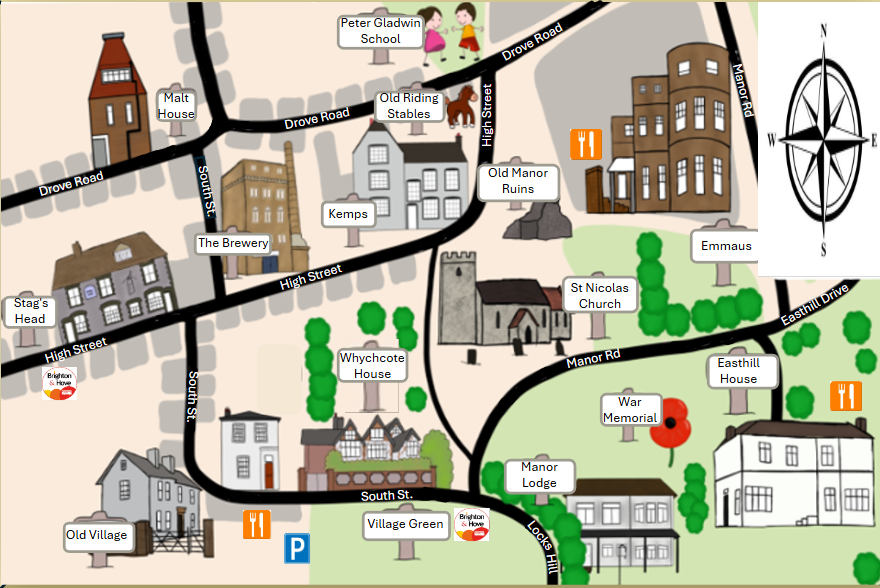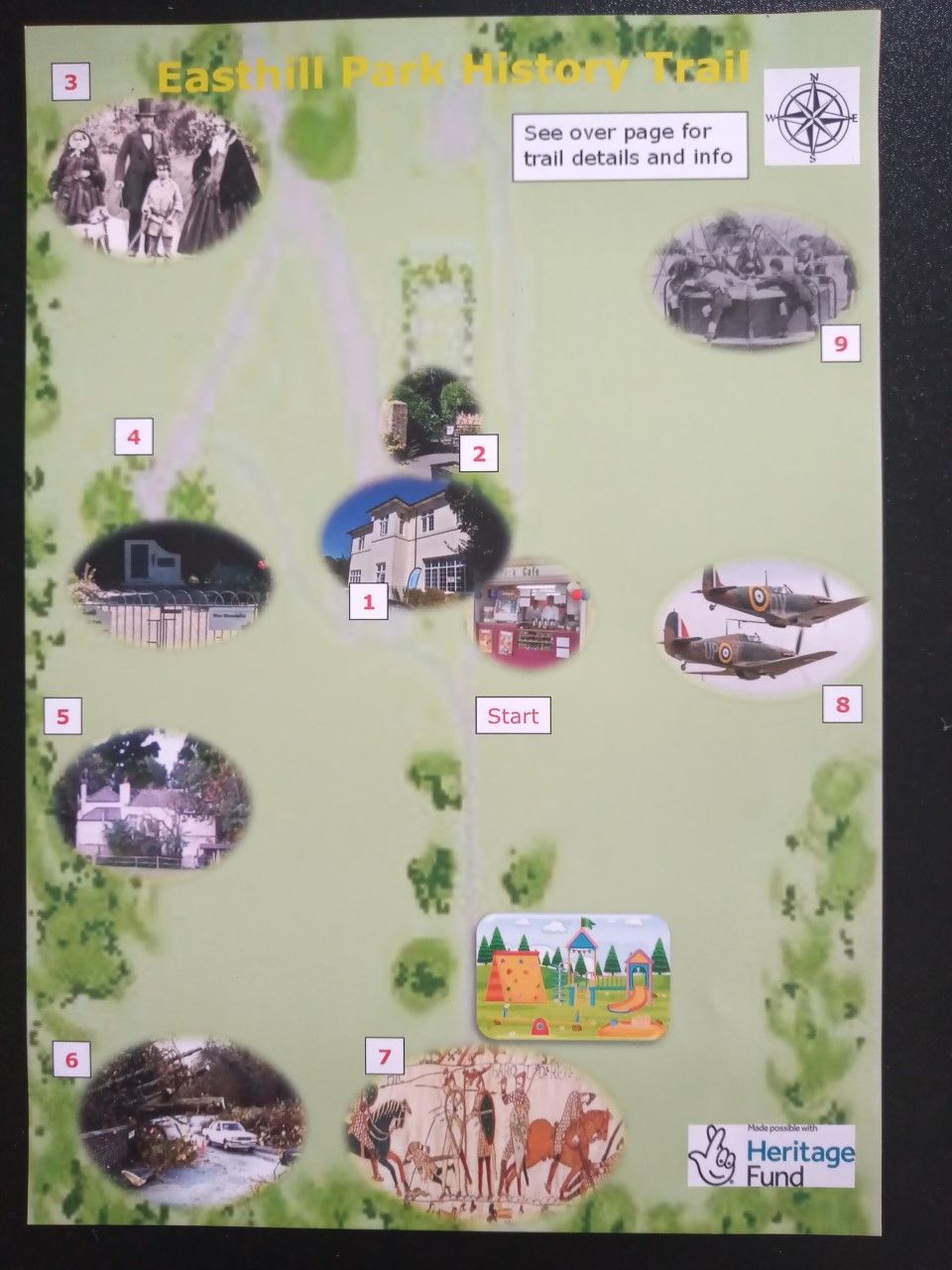Emmaus site tour. The hub of Portslade from the 12th century to the current day
To start the Emmaus historic area tour, head towards the manor ruins. These are to the south west of the Emmaus site, and are behind the small picket fence
Location one: Portslade Manor House Ruins.
Once you have finished the video, head up the small path to the east to the large Georgian manor house
Location 2. Georgian Manor House
The next stop is The Chapel. It is just around the corner to the right hand side of the manor house
Location 3. The Chapel
The next point is the entrance to the Secret Garden. Either head down the steep bank by the Georgian manor house, or stay at the top and listen in. Please note you cannot get into the Secret Garden.
Location 4. The Secret Garden
We next visit the Castle Tower Folly. This is 10 metres to the west of the manor house.
Location 5. The Castle Tower Folly
The secret entrance to the church can be found hidden at the back of the trees, directly to the west wall.
Location 6. Secret Entrance To The Church
Next stop is outside the Emmaus cafe.
Location 7. The nuns accommodation and dinning room
We now head towards the Dovecote. Head through the car park to wards the main entrance. The Dovecote is on the right hand side, just up the slope. Please beware of traffic entering the site.
Location 8. The Dovecote
Follow the path up the slope to the Vintage Emporium. This was once the Entertainment Room for the convent.
Location 9. The Entertainment Room
For the final stop on the tour, head back through the car park to the main retail section of Emmaus (where all the sofas and chairs are). This was once the commercial laundry section for the convent
Location 10. The Commercial Laundry Business
And that concludes the tour of this historic site. You can click on the links below for other free Portslade tours.
Tour of the Portslade conservation area. 1000 years of history in a one mile walk. Click on the map to start
To tour Easthill Park, click on the link below


